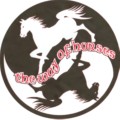


Copyright © Success Is Easy
Eleanor
Richards |
Beet Pulp and Horses By Eleanor Richards Copyright @ 2005 It's high in digestible fiber. It has a low non-structural carbohydrate level. It has a low glycemic index. What is this miracle feed for horses? Beet pulp! After sugar is extracted from beets the left over pulp is a form of highly digestible fiber suitable for horses. Beet pulp contains 18.0% crude fiber, which puts it on the borderline of being classified as forage. The equine digestive system is designed to utilize fiber. The cecum, which is part of the large intestine, contains microbes. These microbes break down cellulose and fiber. The fiber in beet pulp is broken down in the cecum and produces energy for the horse to utilize. Fiber is a structural carbohydrate. Non-structural carbohydrates (NRC) are starches and sugars. Non-structural carbs (corn, oats, barley and molasses are examples) increase the glycemic index. Beet pulp has a low glycemic index. The glycemic index is a numerical number given to a food or feed. This number represents the average increase in blood glucose after a meal. For example, Anne Rodiek of the Department of Animal Sciences, California State University, Davis, published a study in which oats were given the glycemic index value of 100, as the average. Corn came in with a value of 117 and beet pulp (plain with no added molasses) a value of one. Maintaining a low blood glucose level helps keep some horses calm. Feeds that contain high glycemic levels, which in turn spikes blood glucose, may cause some horses to become full of energy or "hot". Horses that suffer from Equine Metabolic Syndrome, peripheral Cushing's disease, insulin resistance and hypo-thyroid problems will also benefit from a diet that is beet pulp and forage based. These horses do not produce insulin normally and blood glucose is not regulated properly. The resulting high levels of blood glucose can trigger a toxic situation resulting in laminitis. Though beet pulp is high in digestible fiber it does not contain enough long stem fiber to be fed as the only source of forage. Up to 25.0% of the horse's total diet may be replaced with beet pulp. But, some of the horse's diet must be a source of long stem fiber -- hay, pasture or alfalfa/timothy cubes. The long stem fiber is needed to keep the hindgut working properly. The fiber pieces should not be less than three quarters of an inch long. Here are the myths that persist about feeding beet pulp to horses. Myth number one: it will swell up and rupture the stomach. The stomach of the horse has the ability to detect when the maximum content level is approaching. A hormone called motilin is released. This hormone causes the stomach to empty - passing the contents into the small intestine and in turn to the large intestine. There is plenty of room and the beet pulp will be utilized very efficiently. Myth number two: beet pulp needs to be soaked. Numerous horses have been fed beet pulp dry with no problems. Horses that tend to eat quickly or gulp their feed should have the beet pulp soaked or they may choke. Also, soaking helps get more fluids into a horse. Myth number three: beet pulp causes choke. Horses that choke on beet pulp may choke on other concentrated feeds. These horses usually bolt their feed. A few large rocks in the feeder will slow down their consumption rate. Soaking may help…no matter what the feed is. Beet pulp can help the horse that has trouble maintaining weight or problems chewing. It can also be used as a hay extender if hay supplies are running low. If the forage quality is poor, beet pulp can also be a good source of digestible fiber. There are many products on the market that have a beet pulp base. These products also contain the needed minerals and vitamins to make a balanced diet. Observation is critical in horse nutrition. It is possible, after observing an individual animal, beet pulp or a beet pulp based product may be the answer to increasing weight without increasing the glycemic index. * Proper nutrition and management practices can prevent many problems associated with caring for horses. You can learn how to provide your horse with a better life-style by taking the online course "How to Feed for Maximum Performance" taught by Eleanor Richards. Go to www.horsecoursesonline.com for more information. Contact Eleanor at elrichards@thewayofhorses.com or (440) 554-3714. Be sure to visit Eleanor's web site at www.thewayofhorses.com |